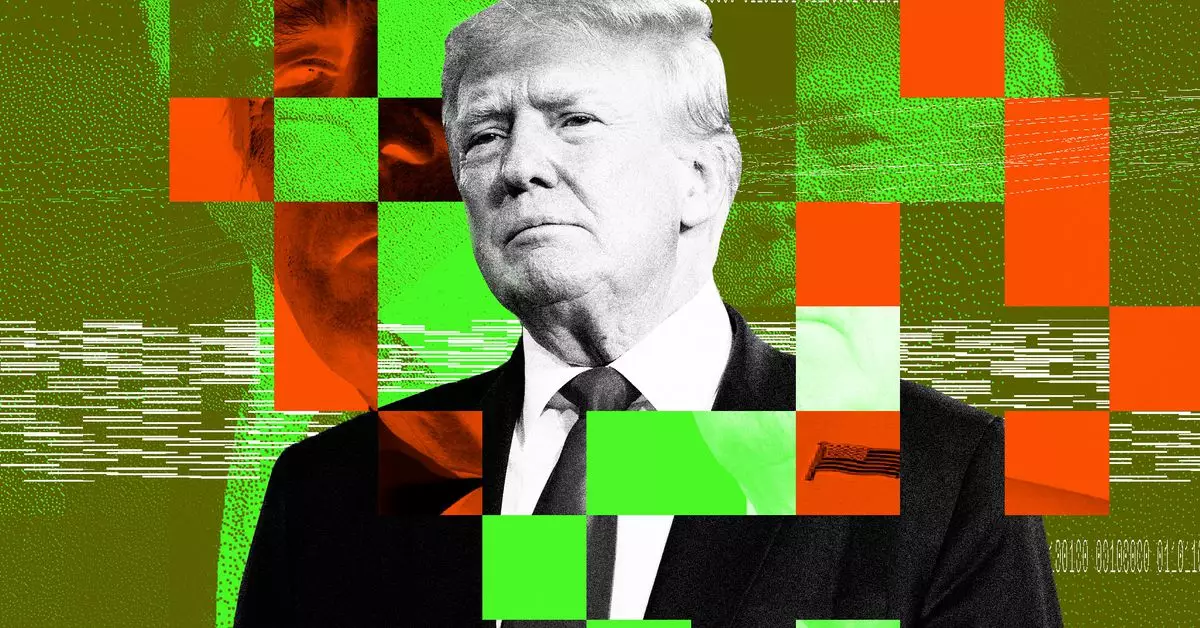The cryptocurrency realm is no stranger to ambitious declarations and grand promises, yet the introduction of World Liberty Financial has stirred particular interest and skepticism. Spearheaded by controversial figures such as former President Donald Trump and his associates, this platform purports to be a game-changer for the average American, claiming to challenge the stranglehold of traditional banks and empower those often excluded from financial services. However, a closer examination reveals an unsettling ambiguity about its operations—notably, a lack of clarity surrounding its concrete functionality, which raises eyebrows and questions.
World Liberty Financial positions itself as a vehicle for mass adoption of stablecoins and decentralized finance. Trump himself characterized this initiative on Truth Social as a means of liberating “the average American” from the clutches of “big banks and financial elites.” At first glance, this assertion resonates with the prevailing discontent among many who grapple with the traditional financial system’s barriers. Donald Trump Jr. even reinforced this narrative in an X Space discussion, suggesting that the platform would primarily assist the unbanked and those who have been marginalized financially.
Yet, despite the grand rhetoric, specifics about World Liberty Financial’s utility remain nebulous at best. For potential users, understanding precisely how this platform will operate and what mechanisms it employs to achieve its lofty claims becomes a matter of critical importance. The calls for mass participation are dampened by the apparent exclusivity of its access to accredited investors and non-US residents at this stage, highlighting an incongruity between intent and action.
As World Liberty Financial rolls out its registration process, it has created a whitelist open to accredited investors and non-US individuals. This leaves a significant portion of the U.S. population—especially among the unbanked and underserved—on the sidelines. According to definitions set forth by the Securities and Exchange Commission (SEC), accredited investors must meet stringent financial criteria, which effectively limits access to a select demographic. Although approximately 24 million U.S. households meet these criteria, the majority of Americans remain unable to participate in this supposedly democratizing endeavor.
This disconnection raises questions about the platform’s commitment to its purported mission of aiding the financial disenfranchised. The significant gap between Trump’s claims of empowering the unbanked and the actual policy restricting access suggests a potential failure to engage the very demographic it purports to support.
Corey Caplan, an adviser to World Liberty Financial, has made assertions regarding the governance tokens (WLFI) that the platform plans to distribute, while a whitepaper obtained earlier indicates that a substantial portion of these tokens would be retained by the founding members. The contradictory statements—initially quoted figures of token distribution versus later claims—exemplify the muddled communication surrounding the project. It further amplifies the concern over transparency and accountability, foundational tenets typically championed within the cryptocurrency sector.
Moreover, the claim that “additional information” about the project will only be shared with those who complete the KYC process appears to sideline broader public engagement and awareness. Instead of fostering an open dialogue regarding its operational model, World Liberty Financial chooses to control the narrative through selective information dissemination, raising a red flag regarding its intentions.
World Liberty Financial’s introduction to the cryptocurrency landscape elicits a blend of intrigue and skepticism. On one hand, there are bold proclamations about turning the financial system on its head; on the other, a reality characterized by exclusivity and ambiguity emerges. With unresolved questions around its functionality and eligibility criteria, potential users are left to wonder whether this initiative is genuinely committed to revolutionizing finance for the masses or merely a veneer of innovation masking a traditional structure.
Ultimately, if World Liberty Financial is to fulfill its promises, it must transition from vague assertions to actionable plans that engage a diverse array of potential users. The path forward hinges on its ability to reconcile its noble vision with tangible mechanisms that ensure inclusivity, transparency, and an authentic commitment to its stated mission. The clock is ticking, and the cryptocurrency community awaits an answer to the question that looms large: what does World Liberty Financial truly offer?

